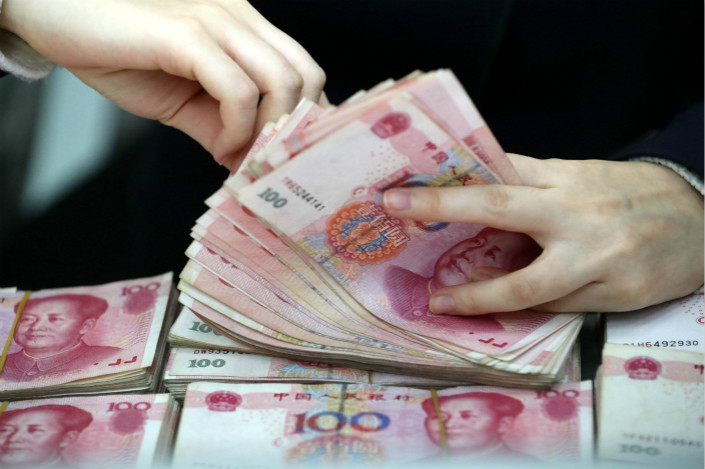China Sets Yuan Midpoint Against Dollar at One-Year High

(Beijing) — China’s central bank guided the yuan stronger on Wednesday, setting the currency’s daily trading midpoint against the U.S. dollar at a one-year high, after the greenback weakened amid escalating tensions on the Korean Peninsula and decreased oil production in Texas from a historically damaging hurricane.
The People’s Bank of China (PBOC) set the yuan’s central parity rate at 6.6102 against the dollar, an appreciation from Tuesday’s 6.6293 and its strongest level since Aug. 17, 2016.
The yuan, which depreciated about 6.6% against the dollar in 2016, has strengthened more than 4% so far this year as Beijing’s efforts to combat capital outflows and boost confidence in the Chinese currency have taken effect.
Economists from CEBM Group, a subsidiary of the Caixin Insight Group, said that by adding a “countercyclical adjustment” factor in May, the central bank has more power to offset market sentiment that is betting against the yuan.
“The adding of the factor in May largely reversed the more-than-yearlong pessimistic expectations that the yuan will continue to depreciate,” CEBM said in a note.
Economists said the yuan could continue strengthening in the short term despite policy uncertainties lying ahead.
“For the next 12 months, we believe the chance for the (yuan-per-dollar exchange rate) to hit 6.4 is pretty high,” said Larry Hu, economist with Macquarie Research, in a note.
“The uncertainties are mainly coming from central banks such as the Fed and PBOC,” he added.
“For the PBOC, the question is whether it would allow the yuan to rise without intervention, or start buying dollars again to curb the strength of the yuan,” he said.
A strengthening yuan could dampen China’s exports, one of the major drivers of the Chinese economy, as it raises the dollar-denominated prices of Chinese goods for foreign importers.
Guo Jiayi, an analyst with Commercial International Bank Research, said the yuan might further strengthen against the dollar on improving Chinese economic fundamentals and bullish market expectations for the currency.
Remnants from Hurricane Harvey, the most powerful storm to hit the U.S. state of Texas in more than 50 years, continued wreaking havoc there, substantially affecting the production, refining and transportation of oil in the region and adversely affecting the American economic outlook.
The U.S. Dollar Index, a measure of the currency against a basket of global peers, weakened more than 9% from the beginning of this year as of today.
As of the time of publishing, the offshore renminbi exchange rate, which is not bound by the yuan’s daily fixing rate, was trading at 6.5931 against the dollar.
In trading within China’s borders, which accounts for the bulk of the currency pool, $1 can buy 6.58 yuan.
Contact reporter Pan Che (chepan@caixin.com)

- 1Simandou’s First Ore Shipment Stalls as Locomotive Rift Deepens
- 2In Depth: Malaysia Becomes a Lynchpin in U.S.-Led Effort to Break China’s Grip on Rare Earths
- 3China Unveils Plan to Boost Consumption in Trillion-Yuan Markets
- 4Chinese Banks Slash Loan Rates in Year-End Push, Raising Risk Concerns
- 5In Depth: China’s ‘Queen of Bonds’ Taken Away Amid Finance Anti-Graft Drive
- 1Power To The People: Pintec Serves A Booming Consumer Class
- 2Largest hotel group in Europe accepts UnionPay
- 3UnionPay mobile QuickPass debuts in Hong Kong
- 4UnionPay International launches premium catering privilege U Dining Collection
- 5UnionPay International’s U Plan has covered over 1600 stores overseas



